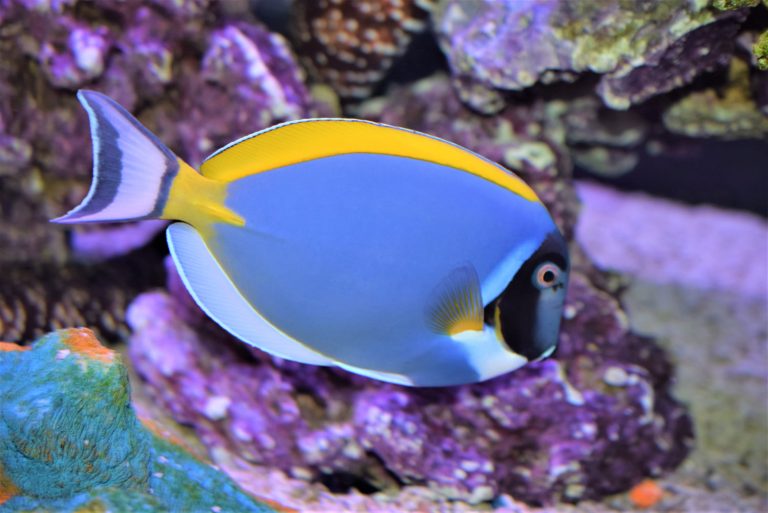Bye-Bye Red Slime Algae: Your Ultimate Guide to Eliminating It!
To get rid of red slime algae quickly, you can use a combination of manual removal, water changes and adding algae-eating creatures to your aquarium or pond. Red slime algae, also known as cyanobacteria, is a common problem that can thrive in environments with too much light, organic nutrients and low water flow.
It can harm aquatic life and make your water appear murky. In this article, we will discuss the causes of red slime algae, the dangers it poses and the best ways to get rid of it. We will also provide tips to prevent it from coming back and maintaining a healthy aquatic environment.

Credit: nymag.com
Understanding Red Slime Algae And Its Effects On Your Aquarium
What Is Red Slime Algae?
Red slime algae, commonly known as cyanobacteria, are not true algae but bacteria that photosynthesize like plants. They are reddish or purplish in color, slimy, and have a pungent odor. They can rapidly spread throughout your aquarium and cause distress to your aquatic pets and plants.
Here are some key points to understand about red slime algae:
- Red slime algae can grow on almost any surface in your aquarium, including rocks, substrate, and even the glass.
- They thrive in areas with high nutrient levels, high temperatures, and low oxygen levels.
- They can reduce oxygen levels in your aquarium, which can be dangerous for fish and other aquatic creatures.
How Does Red Slime Algae Impact Your Aquarium?
Red slime algae can have various negative effects on your aquarium if left untreated. Here are some of the impacts that red slime algae can have on your aquarium:
- Red slime algae can quickly overgrow and cover parts of your aquarium, making it unsightly and unattractive.
- They can outcompete and suffocate other aquatic plants and creatures by reducing oxygen levels.
- They can release toxins into the water, which can harm fish and other aquatic residents.
- The slimy film that red slime algae create can clog the filter, causing it to malfunction.
Common Causes Of Red Slime Algae Growth In Aquariums
Understanding the common causes of red slime algae growth is crucial to prevent their recurrence. Here are some of the common causes of red slime algae growth in aquariums:
- Overfeeding and overstocking of fish in the aquarium can contribute to high nutrient levels and increase the chances of red slime algae growth.
- Using tap water that contains high levels of nutrients can introduce red slime algae spores to the aquarium.
- Poor water circulation and lack of water changes can also increase the chances of red slime algae growth.
- High light levels and prolonged exposure to direct sunlight can also promote the growth of red slime algae.
Identifying Red Slime Algae In Your Aquarium
If you’re an aquarium enthusiast, you know how frustrating it is to deal with red slime algae in your tank. It’s a photosynthetic bacteria that can quickly overrun your aquarium if not addressed in time. Here are a few things to look for to help you identify red slime algae:
Visual Clues And Signs Of Red Slime Algae
- The distinctive red or brown slimy substance that forms on your aquarium’s surfaces, including rocks, sandbed, glass, and coral skeletons.
- A thick mat of reddish-brown slime on the aquarium’s substrate, which has a mucus-like appearance and consistency.
- Red slime algae often grow in areas of your aquarium with high light levels, low water flow, and low nutrient levels.
Testing For Red Slime Algae In Your Aquarium Water
Regular testing of your aquarium’s water can help you catch red slime algae before it takes over your aquarium. Here are some ways to test your water for red slime algae:
- Conduct a phosphate test since red slime algae feed on excess phosphates. You can purchase a phosphate test kit from your local aquarium store.
- Perform nitrate and ammonia tests since the presence of high levels of these compounds may denote an overfeeding problem, which can contribute to the growth of red slime algae.
- Conduct a ph test since red slime algae prefer alkaline water with a ph range between 7.8 to 8.4.
Identifying and testing for red slime algae in your aquarium are the first steps to keeping your aquarium healthy and thriving. Keep in mind that manual removal of red slime algae, along with strict control and regular maintenance of water parameters, can help you eliminate this pesky algae from your aquarium permanently.
Eliminating Red Slime Algae From Your Aquarium
Red slime algae, also known as cyanobacteria, can be a nightmare for aquarium owners. This unsightly algae growth can suffocate and kill your plants and fish, contaminate your tank water, and ruin the overall aesthetic of your aquarium. But don’t worry, eliminating red slime algae from your aquarium is not impossible.
In this section, we will go through the non-chemical and chemical methods that you can use to get rid of red slime algae. We will also discuss the best products that you can use to eliminate it effectively.
Non-Chemical Methods For Removing Red Slime Algae
If you prefer non-chemical methods, here are some ways that you can try to remove red slime algae from your aquarium:
- Reduce the amount of light your aquarium receives daily.
- Increase the number of water changes that you make weekly.
- Install a more efficient filtration system
- Use a gravel vacuum to remove debris from your tank’s bottom.
- Remove any affected plants, rocks, or decorations from your aquarium.
- Add more live plants to your aquarium to create more competition for nutrients.
Chemical Treatments For Red Slime Algae Removal
In some cases, non-chemical methods may not work, and you may need to use chemical treatments to eliminate red slime algae. Here are some popular chemical treatments that you can use:
- Antibiotics: They kill the bacteria causing the red slime algae, but they can take some time to work.
- Hydrogen peroxide: It can quickly kill red slime algae, but it can harm your live plants and fish if not used correctly.
- Algaecides: These products range in effectiveness, and some can harm tank inhabitants or require multiple treatments.
- Phosphate removers: They can help limit nutrient availability for red slime algae and work to prevent future growth.
Best Products For Eliminating Red Slime Algae In Your Aquarium
Here is a list of some of the best products for effectively eliminating red slime algae from your aquarium:
- Seachem phosguard
- Boyd chemiclean
- Fluconazole
- Api algaefix
- Kent marine poly-ox
Remember, it’s important to research each product thoroughly before using it in your aquarium. Also, use chemical treatments as a last resort, as the use of chemicals could harm your live plants, fish, and invertebrates.
Preventing Red Slime Algae Growth In The Future
There are several ways to prevent the growth of red slime algae in your aquarium. Practicing regular maintenance, maintaining a healthy aquarium environment, and implementing additional strategies can all play a role in preventing red slime algae from growing in the future.
Regular Maintenance Practices To Limit Red Slime Algae Growth
Regular maintenance is key to preventing the growth of red slime algae in your aquarium. Here are some practices to follow:
- Perform water changes regularly, at least every two weeks, to maintain water quality.
- Clean your aquarium equipment regularly to prevent the buildup of excess nutrients.
- Avoid overfeeding your fish, as excess food can contribute to the growth of algae.
- Use a protein skimmer to help remove excess nutrients from the water.
Tips For Maintaining A Healthy Aquarium Environment
Maintaining a healthy aquarium environment is crucial to preventing the growth of red slime algae. Here are some tips to follow:
- Properly cycle your aquarium before adding fish to establish a healthy biological balance.
- Ensure the water temperature and ph levels are appropriate for the fish and coral in your aquarium.
- Use high-quality salt mix for water changes to maintain proper salinity levels.
- Provide appropriate lighting for the type of coral in your aquarium.
Additional Strategies For Future Red Slime Algae Prevention
In addition to regular maintenance and maintaining a healthy aquarium environment, there are additional strategies you can implement to prevent red slime algae growth in the future:
- Avoid using tap water, as it may contain excess nutrients and chemicals.
- Use reverse osmosis (ro) water for water changes to reduce the amount of dissolved solids and excess nutrients.
- Consider adding herbivorous fish or invertebrates to your aquarium, as they can help control algae growth.
- Use a phosphate removal media, such as gfo, to help reduce excess nutrients in the water.
By implementing these practices, you can help prevent the growth of red slime algae in your aquarium and maintain a healthy and thriving aquatic environment.
Frequently Asked Questions For How To Get Rid Of Red Slime Algae
What Is Red Slime Algae And Why It’S A Problem?
Red slime algae is a common problem in saltwater aquariums. It often appears as a reddish or purplish slimy film on rocks or substrate. It can cause a range of problems, including oxygen depletion, ph imbalance, and the death of other aquarium inhabitants.
What Are The Causes Of Red Slime Algae Growth?
Red slime algae growth is caused by a combination of factors, including high nutrient levels, low oxygen levels, and poor water circulation. These factors can lead to an overgrowth of bacteria, which in turn can result in red slime algae growth.
How Can I Prevent Red Slime Algae From Growing?
To prevent red slime algae from growing, it is important to maintain a healthy and balanced aquarium environment. This includes regular water changes, proper filtration, and avoiding overfeeding. You can also take steps to reduce nutrient levels in your aquarium by using a protein skimmer or adding live plants.
What Are Some Effective Treatments For Red Slime Algae?
There are several effective treatments for red slime algae, including adding aeration to increase oxygen levels, reducing nutrient levels through water changes and protein skimming, using marine algae grazers, and using chemical treatments such as erythromycin or metroplex. It’s important to note that some treatments may harm other aquarium inhabitants, so always research carefully before choosing a treatment option.
Conclusion
After reading this comprehensive guide, you now have a better understanding of what red slime algae is, its causes, and most importantly, how to get rid of it. Whether you opt for natural or chemical solutions, remember to test your water parameters often and maintain a regular cleaning routine.
Consistency and patience are key in successfully eradicating red slime algae and preventing its regrowth. Don’t let this seemingly harmless nuisance take over your aquarium or ruin your aquatic livestock’s health. Follow these tips and tricks, and say goodbye to the red menace once and for all.
Happy reefkeeping!






